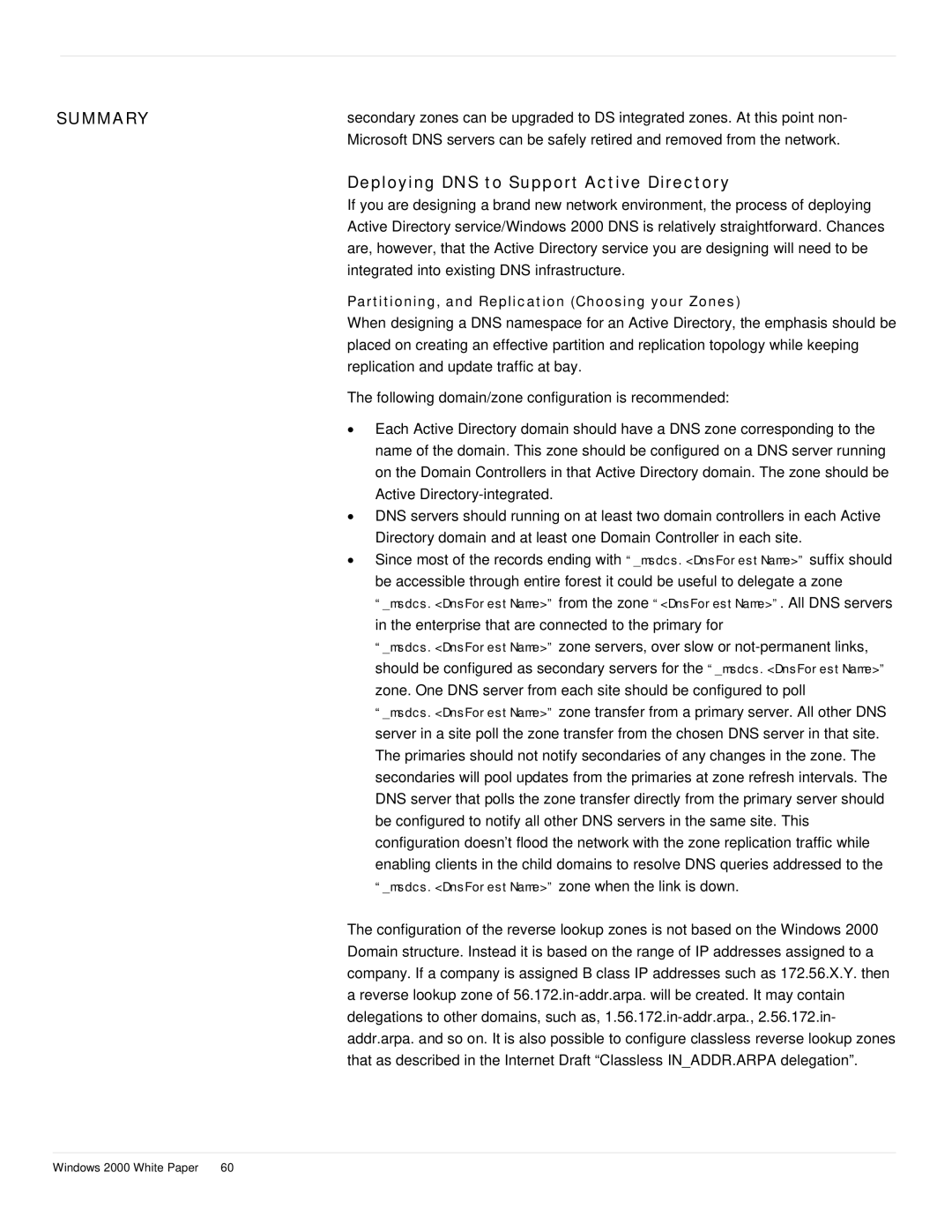
SUMMARY | secondary zones can be upgraded to DS integrated zones. At this point non- |
| Microsoft DNS servers can be safely retired and removed from the network. |
| Deploying DNS to Support Active Directory |
| If you are designing a brand new network environment, the process of deploying |
| Active Directory service/Windows 2000 DNS is relatively straightforward. Chances |
| are, however, that the Active Directory service you are designing will need to be |
| integrated into existing DNS infrastructure. |
| Partitioning, and Replication (Choosing your Zones) |
| When designing a DNS namespace for an Active Directory, the emphasis should be |
| placed on creating an effective partition and replication topology while keeping |
| replication and update traffic at bay. |
| The following domain/zone configuration is recommended: |
| • Each Active Directory domain should have a DNS zone corresponding to the |
| name of the domain. This zone should be configured on a DNS server running |
| on the Domain Controllers in that Active Directory domain. The zone should be |
| Active |
| • DNS servers should running on at least two domain controllers in each Active |
| Directory domain and at least one Domain Controller in each site. |
| • Since most of the records ending with “_msdcs.<DnsForestName>” suffix should |
| be accessible through entire forest it could be useful to delegate a zone |
| “_msdcs.<DnsForestName>” from the zone “<DnsForestName>”. All DNS servers |
| in the enterprise that are connected to the primary for |
| “_msdcs.<DnsForestName>” zone servers, over slow or |
| should be configured as secondary servers for the “_msdcs.<DnsForestName>” |
| zone. One DNS server from each site should be configured to poll |
| “_msdcs.<DnsForestName>” zone transfer from a primary server. All other DNS |
| server in a site poll the zone transfer from the chosen DNS server in that site. |
| The primaries should not notify secondaries of any changes in the zone. The |
| secondaries will pool updates from the primaries at zone refresh intervals. The |
| DNS server that polls the zone transfer directly from the primary server should |
| be configured to notify all other DNS servers in the same site. This |
| configuration doesn’t flood the network with the zone replication traffic while |
| enabling clients in the child domains to resolve DNS queries addressed to the |
| “_msdcs.<DnsForestName>” zone when the link is down. |
| The configuration of the reverse lookup zones is not based on the Windows 2000 |
| Domain structure. Instead it is based on the range of IP addresses assigned to a |
| company. If a company is assigned B class IP addresses such as 172.56.X.Y. then |
| a reverse lookup zone of |
| delegations to other domains, such as, |
| addr.arpa. and so on. It is also possible to configure classless reverse lookup zones |
| that as described in the Internet Draft “Classless IN_ADDR.ARPA delegation”. |
Windows 2000 White Paper | 60 |
